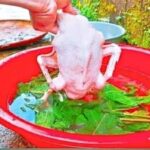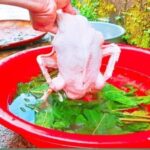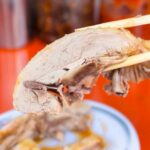Duck is a familiar and delicious dish in Vietnamese cuisine, from boiled duck, roasted duck, to bun mang vit (duck with bamboo shoots and vermicelli) or duck porridge, all of which are very popular. However, duck preparation, especially feather plucking and odor removal, can be a daunting task for many home cooks. If not done properly, the duck may still have down feathers, dark skin, or a strong odor that affects the flavor of the dish. Don’t worry, this article will share with you some effective home tips for cleaning duck feathers, helping you confidently prepare delicious duck dishes.
1. Choose the right duck for easier feather removal
To make feather plucking easier from the start, opt for a mature duck with medium fat content and thick skin, whose feathers are already firm. Avoid choosing a young duck as they tend to have more down feathers, making it difficult to clean and prone to leaving a foul odor. When buying a live duck, ask the seller to slaughter and pluck the feathers initially to save time. If you’re purchasing a dressed duck, carefully inspect the skin to ensure no down feathers are left behind.
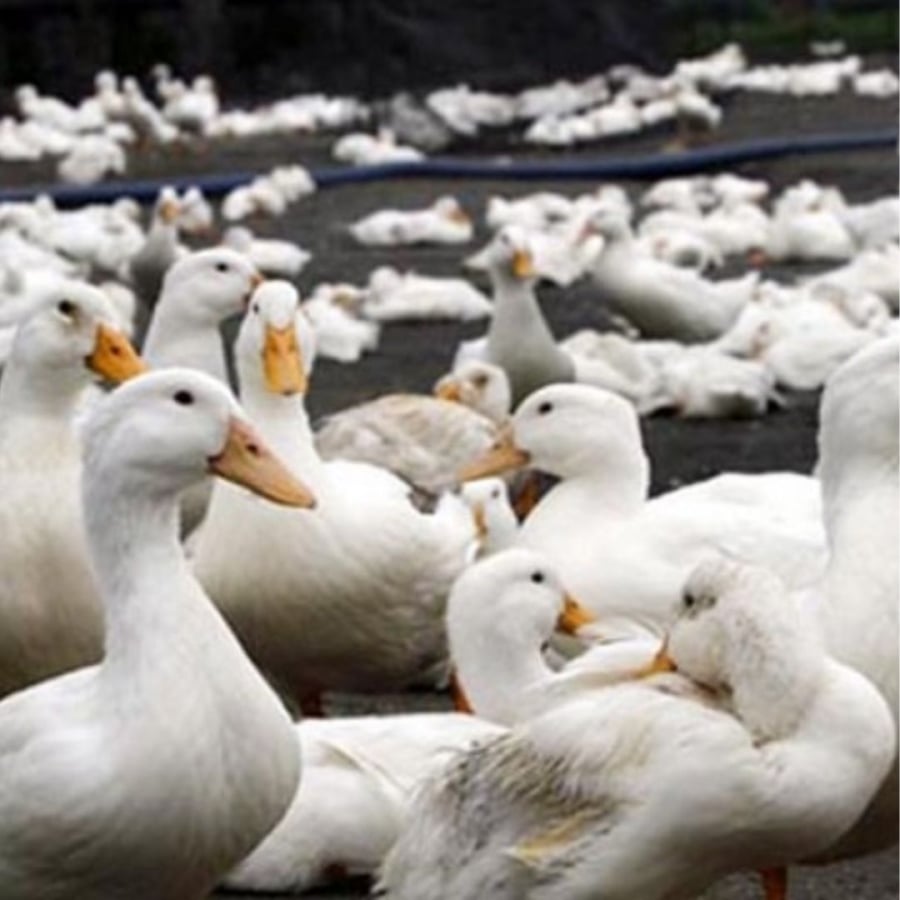
2. Use water at the right temperature for feather removal, avoiding boiling water
One crucial tip for plucking duck feathers cleanly and avoiding skin discoloration is to use boiling water wisely. Many people make the mistake of immersing the duck in water that is too hot (100°C), causing the skin to contract, making feather removal difficult, and increasing the likelihood of tearing or leaving down feathers behind. The ideal temperature for duck scalding is around 70–80°C.
Here’s how:
- Boil water, then add cold water to reduce the temperature to around 80°C.
- Immerse the duck in the water and use chopsticks to turn it over so that the water permeates the duck’s body.
- Soak for 1–2 minutes, then proceed to pluck the feathers.
- If feathers are still difficult to remove, you can dip the duck in the water again.
- With this method, the feathers will come out more easily, and the duck’s skin will remain white and intact, without tearing or discoloration.
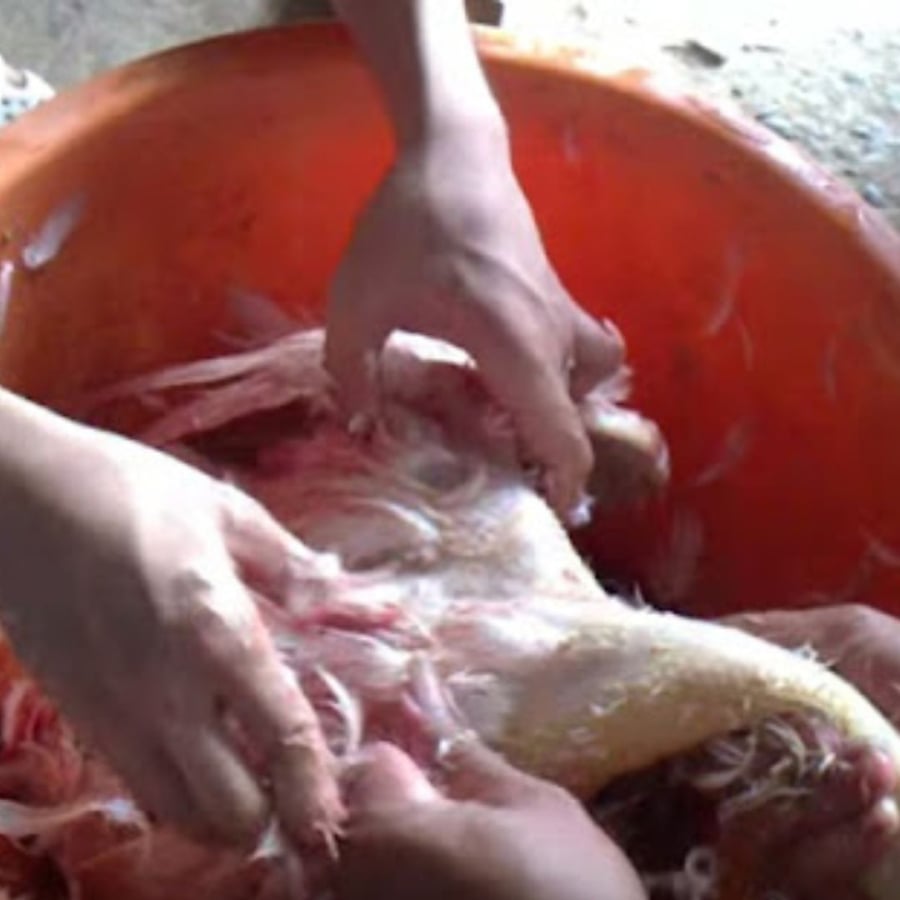
3. Use ash or flour to remove down feathers
After plucking the larger feathers, you’ll notice that there are still many tiny down feathers clinging close to the skin. These are the ones that can cause a foul odor if not removed properly. A traditional and effective method is to use ash or flour.
Instructions:
- Sprinkle ash evenly over the duck’s skin, then use your hands or a coarse cloth to rub gently.
- The ash will cling to the tiny feathers, making them easier to remove.
- If ash is not available, mix flour with a small amount of water to create a sticky paste, then rub it onto the duck’s skin in a similar manner.
This method not only helps remove down feathers but also brightens the duck’s skin, making it more aesthetically pleasing during preparation.
4. Tip for plucking duck feathers using papaya leaves
This is an extremely useful traditional tip that not many people know about. Papaya leaves contain an enzyme called papain, which helps break down the protein bonds at the base of the feathers, making them easier to pluck, including down feathers.
Instructions:
- Prepare a few fresh papaya leaves (around 3–5 leaves, depending on size).
- Boil the leaves in water for 5–10 minutes.
- Let the water cool down to around 70–80°C.
- Use this water to scald the duck as usual.
- After 1–2 minutes, remove the duck and start plucking the feathers.
Papaya leaves not only help in quickly removing feathers but also soften the skin and naturally reduce the duck’s odor.
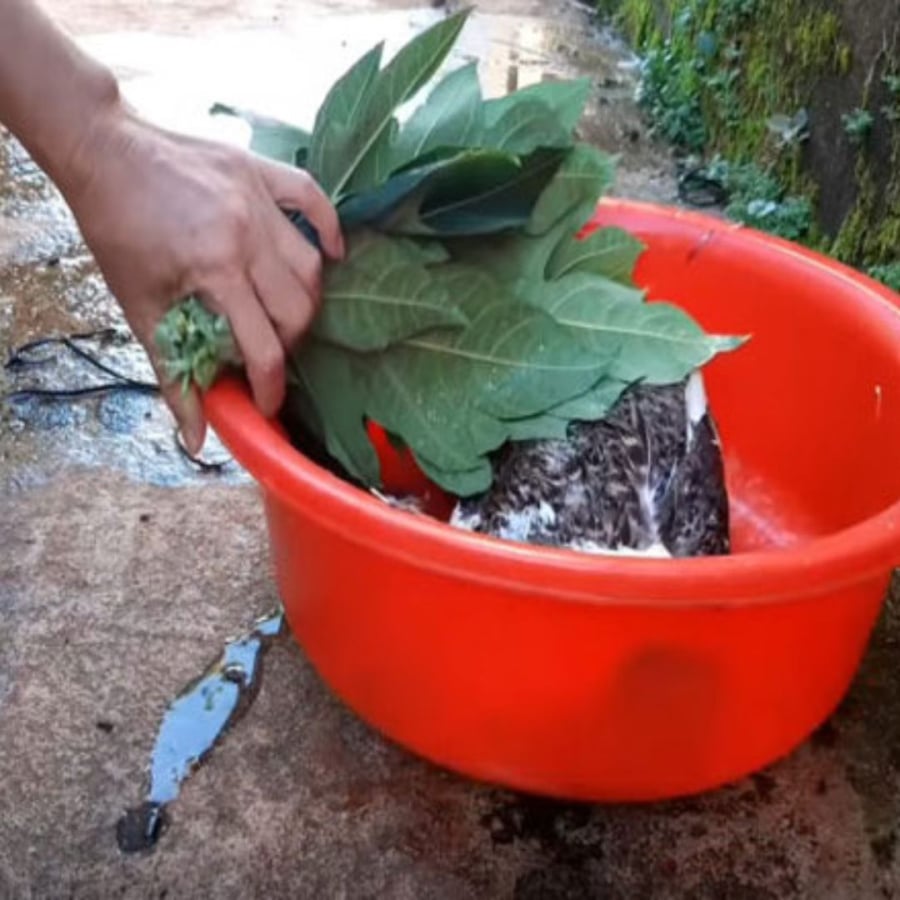
5. Tips for thoroughly removing the duck’s odor
The distinctive odor of duck feathers often makes people hesitant. To effectively eliminate the smell, you can use some readily available ingredients from your kitchen:
a. Ginger and white alcohol
Grind a small piece of ginger and mix it with 2–3 spoons of white alcohol.
Rub this mixture all over the duck’s body, especially the neck, wings, and abdomen, where odor-causing glands are usually located.
Let it sit for 5–10 minutes, then rinse with clean water.
b. Lemon and salt
Cut a lemon in half and rub it along with some salt all over the duck’s skin.
This method not only removes the odor but also cleans the slimy layer, tightening and brightening the skin.
c. Vinegar
Mix vinegar with water in a 1:2 ratio and soak the duck for about 10 minutes.
Then, rinse it thoroughly with cold water.
Combining these methods will help eliminate the duck’s foul odor, ensuring that your cooked dish smells delicious and is free from any unpleasant taste.
6. Some precautions when preparing duck
- When butchering the duck, be careful not to puncture the gallbladder, as it will make the meat bitter and leave an unpleasant smell.
- Use a sharp knife to butcher the duck gently, keeping the skin intact.
- After cleaning, let the duck air-dry before marinating or cooking to retain its flavor.
Feather plucking and odor removal are no longer challenging if you apply the right techniques. With simple methods like using water at the right temperature, ash, ginger, alcohol, lemon, salt, or vinegar, you can confidently process duck at home without relying on market vendors. By following these careful steps, you’ll have clean and tasty duck meat to prepare delicious and hygienic duck dishes for your family.
The Ultimate Guide to Making Delicious Roasted Duck: A Memorable Culinary Experience
With this mouth-watering roast duck recipe, you’ll be able to create a culinary masterpiece that rivals any 5-star restaurant. This dish is sure to impress and satisfy even the most discerning palate. A true culinary delight, this roast duck is the perfect centerpiece for a special occasion or a cozy night in.


























